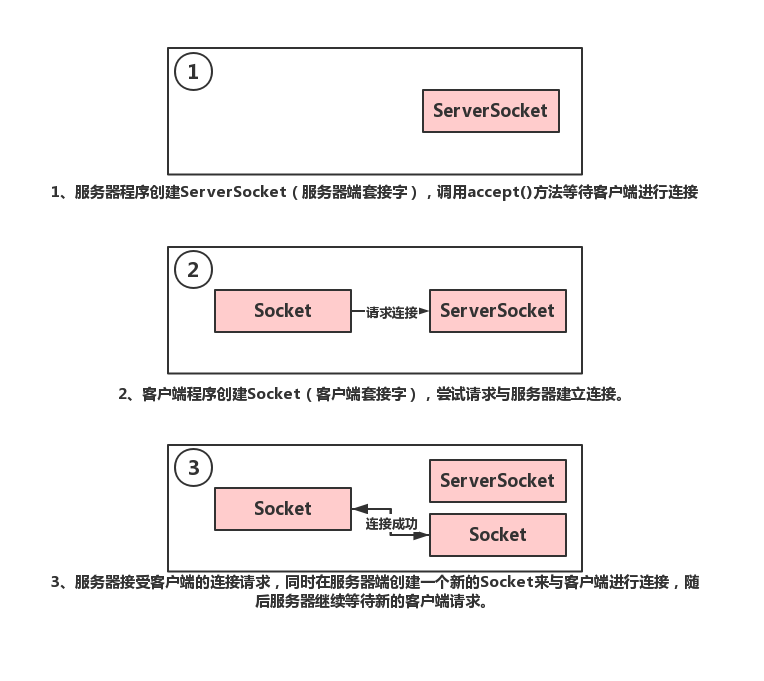寫給小白學習的地理信息的表示法GeoJSON
目錄
- 簡介
- 舉例
- 空間行狀
- FeatureCollection
- Feature
- 幾何對象
- Point
- MultiPoint
- LineString
- MultiLineString
- Polygon
- MultiPolygon
- GeometryCollection
- 可選屬性
- 其他
- coordinate
- 坐標參考系
- 在 ts 中使用
簡介
GeoJSON 是一種使用 JSON 來編碼各種地理數據結構的格式,是一種輕量級的數據交換格式,可以用來表示幾何對象、屬性數據、空間參考系統等信息
由兩種對象組成:Geometry(幾何對象)和 Feature(空間行狀)
- 幾何對象用來描述地理空間中的點、線、面等幾何形狀
- 空間行狀用來描述一個有界的實體,包括幾何對象和其他屬性信息
幾何對象類型有:
- 點:
Point - 多點:
MultiPoint - 線:
LineString - 多線:
MultiLineString - 面:
Polygon - 多面:
MultiPolygon - 幾何集合:
GeometryCollection
空間行狀類型有:
- 空間行狀:
Feature - 空間形狀集合:
FeatureCollection
舉例
幾何對象和空間行狀可以相互嵌套
const GeoJSON = {
type: "FeatureCollection",
features: [
{
type: "Feature",
geometry: { type: "Point", coordinates: [121.4737, 31.2304] },
properties: { id: 1 },
},
{
type: "Feature",
geometry: { type: "Point", coordinates: [121.4837, 31.2504] },
properties: { id: 2 },
},
],
};
空間行狀
FeatureCollection
FeatureCollection 是 Feature 對象的集合,用來表示一組 Feature 對象
由 type 和 features 兩個屬性組成:
type屬性的值為FeatureCollectionfeatures屬性的值為Feature對象的數組
const FeatureCollectionJSON = {
type: "FeatureCollection",
features: [feature],
};
Feature
Feature 對象用來表示幾何對象的屬性信息
由 type、geometry 和 properties 三個屬性組成:
type屬性的值為Feature,geometry屬性的值為Geometry幾何對象properties屬性的值為屬性對象(可選)
const FeatureJSON = {
type: "Feature",
geometry: { type: "Point", coordinates: [121.4737, 31.2304] },
properties: { id: 1 },
};
幾何對象
Point
Point 用來表示一個點
由 type 和 coordinates 兩個屬性組成:
type屬性的值為Pointcoordinates屬性的值為一個數組,數組的第一個元素為經度,第二個元素為緯度
const PointJSON = {
type: "Point",
coordinates: [121.4737, 31.2304],
};
MultiPoint
MultiPoint 用來表示多個點
由 type 和 coordinates 兩個屬性組成:
type屬性的值為MultiPointcoordinates屬性的值為一個數組,數組的每個元素都是一個點的坐標
const MultiPointJSON = {
type: "MultiPoint",
coordinates: [
[121.4737, 31.2304],
[121.4837, 31.2504],
],
};
LineString
LineString 用來表示一條線
由 type 和 coordinates 兩個屬性組成:
type屬性的值為LineStringcoordinates屬性的值為一個數組,數組的每個元素都是一個點的坐標
const LineStringJSON = {
type: "LineString",
coordinates: [
[121.4737, 31.2304],
[121.4837, 31.2504],
],
};
MultiLineString
MultiLineString 用來表示多條線
由 type 和 coordinates 兩個屬性組成:
type屬性的值為MultiLineStringcoordinates屬性的值為一個數組,數組的每個元素都是一個線的坐標數組
const MultiLineStringJSON = {
type: "MultiLineString",
coordinates: [
[
[121.4737, 31.2304],
[121.4837, 31.2504],
],
[
[121.4727, 31.2314],
[121.4827, 31.2514],
],
],
};
Polygon
Polygon 用來表示一個面
由 type 和 coordinates 兩個屬性組成:
type屬性的值為Polygoncoordinates屬性的值為一個數組,數組的第一個元素為外環的坐標數組,后面的元素為內環的坐標數組
polygon 的坐標數組的第一個元素和最后一個元素是相同的,表示閉合
const PolygonJSON = {
type: "Polygon",
coordinates: [
[
[121.4737, 31.2304],
[121.4837, 31.2504],
[121.4937, 31.2304],
[121.4737, 31.2304],
],
[
[121.4717, 31.2314],
[121.4827, 31.2524],
[121.4937, 31.2334],
[121.4757, 31.2344],
],
],
};
MultiPolygon
MultiPolygon 用來表示多個面
由 type 和 coordinates 兩個屬性組成:
type屬性的值為MultiPolygoncoordinates屬性的值為一個數組,數組的每個元素都是一個面的坐標數組
const MultiPolygonJSON = {
type: "MultiPolygon",
coordinates: [
[
[
[121.4737, 31.2304],
[121.4837, 31.2504],
[121.4937, 31.2304],
[121.4737, 31.2304],
],
[
[121.4737, 31.2304],
[121.4837, 31.2504],
[121.4937, 31.2304],
[121.4737, 31.2304],
],
],
[
[
[121.4737, 31.2304],
[121.4837, 31.2504],
[121.4937, 31.2304],
[121.4737, 31.2304],
],
[
[121.4737, 31.2304],
[121.4837, 31.2504],
[121.4937, 31.2304],
[121.4737, 31.2304],
],
],
],
};
GeometryCollection
GeometryCollection 用來表示幾何對象的集合
由 type 和 geometries 兩個屬性組成:
type屬性的值為GeometryCollectiongeometries屬性的值為幾何對象的數組
const GeometryCollectionJSON = {
type: "GeometryCollection",
geometries: [
{ type: "Point", coordinates: [121.4737, 31.2304] },
{
type: "LineString",
coordinates: [
[121.4737, 31.2304],
[121.4837, 31.2504],
],
},
],
};
可選屬性
這些屬性都是 GeoJSON 的擴展屬性,不是 GeoJSON 規范的一部分
id屬性,用來描述FeatureCollection的唯一標識bbox屬性,用來描述FeatureCollection的邊界框- 四至坐標,一般用來做數據裁剪
- 這是一組左上角和右下角的坐標,示例:
[minLon, minLat, maxLon, maxLat]
properties屬性,用來描述FeatureCollection的屬性crs屬性,用來描述坐標參考系
其他
coordinate
coordinate 是一個數組,表示一個點的坐標,數組的長度表示坐標的維度,一般是 2 維或 3 維
2維:[lon, lat]3維:[lon, lat, height]
coordinate 的第一個元素表示經度,第二個元素表示緯度,第三個元素表示高度
坐標順序是 [lon, lat],這個是推薦順序,可由 crs 屬性指定
coordinates 是多維數組:
- 點:
[lon, lat] - 線:
[[lon, lat], [lon, lat]] - 面:
[[[lon, lat], [lon, lat]]] - 多面:
[[[[lon, lat], [lon, lat]]]]
坐標參考系
最常使用的坐標系是 EPSG:4326 和 EPSG:3857:
EPSG:4326是WGS84(CGCS2000,大地) 坐標系,是GeoJSON規范的默認坐標系EPSG:3857是Web Mercator(墨卡托) 坐標系,是OpenLayers的默認坐標系
它們的區別:
EPSG:4326是經緯度坐標系,EPSG:3857是投影坐標系EPSG:4326的坐標范圍是[-180, -90, 180, 90],EPSG:3857的坐標范圍是[-20037508.342789244, -20037508.342789244, 20037508.342789244, 20037508.342789244]EPSG:4326的坐標單位是度,EPSG:3857的坐標單位是米EPSG:4326的坐標原點是[0, 0],EPSG:3857的坐標原點是[-20037508.342789244, -20037508.342789244]EPSG:4326的坐標軸方向是[x, y],EPSG:3857的坐標軸方向是[x, -y]
在 ts 中使用
為了在 ts 使用 GeoJSON 能夠有類型約束,我整理整理了一些 GeoJSON 的 ts 類型定義和創建 GeoJSON 的方法:
- geojson.d.ts
- geojson.helper.ts
舉例:
表示一個點和多個點的 GeoJSON 集合:
使用geojson.d.ts
type PointType = FeatureCollection<Point | MultiPoint, GeoJsonProperties<T>>;
const point2Geojson: PointType<{ id: string; name?: string }> = {
type: "FeatureCollection",
features: [
{
type: "Feature",
geometry: {
type: "Point",
coordinates: [120.4737, 31.2304],
},
properties: { id: "12", name: "uccs" },
},
{
type: "Feature",
geometry: {
type: "MultiPoint",
coordinates: [
[121.4737, 31.2304],
[111.4737, 31.2204],
],
},
properties: { id: "1" },
},
],
};
創建一個幾何對象
使用geojson.helper.ts
const pointGeometry = point<{ id: string }>([120.4737, 31.2304], {
id: "1",
});
const featureGeoJSON = feature<Point>(pointGeometry);
參考
- GeoJSON
- GeoJSON 格式
- GeoJSON 格式規范
- EPSG 4326 vs EPSG 3857 (投影,數據集,坐標系)
- turf.js
以上就是寫給小白的地理信息的表示法GeoJSON的詳細內容,更多關于GeoJSON地理信息表示法的資料請關注其它相關文章!

 網公網安備
網公網安備